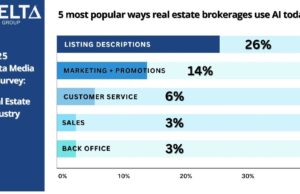Serious mortgage delinquency rates stabilize in U.S. metros, but share of loans in foreclosure grows
Latest data from all 366 U.S. metro areas indicate properties lingering in foreclosure inventory
WASHINGTON, DC – August 17, 2011 – (RealEstateRama) — Serious delinquency rates for mortgages continue to stabilize across the largest 100 U.S. metropolitan areas, though they remain at historically high levels according to the latest data from Foreclosure-Response.org. Serious delinquency, defined as the share of loans in foreclosure plus the share of loans delinquent 90 or more days, fell 10% from the peak in December 2009 through March 2011. The 90+-day delinquency component of the figure fell from 5.5% of the mortgage market to 3.9% over the same period. However, the share of homes in foreclosure continues to rise, increasing 12% in that period.
“The nation’s foreclosure problems are far from over,” commented Urban Institute Research Associate Leah Hendey, a researcher on the project. “The data clearly demonstrate that communities across the country need strong policies to set families and neighborhoods on the course to recovery.”
Because the volume of foreclosure starts has not grown significantly, growth in the foreclosure inventory indicates that properties are not exiting the foreclosure process.
“In some states, foreclosure processes are excessively slow, while in others they are too rapid,” said Jeffrey Lubell, executive director of the Center. “Waiting too long to finalize a foreclosure prolongs recovery for borrowers and neighborhoods, but pursuing foreclosures too quickly shuts down real opportunities to save homes. Both trends contribute to the destabilization of communities.”
Foreclosure backlog is particularly acute in the housing markets of many metro areas in N.Y., the state with the longest average foreclosure process. Metros in the Pacific Northwest are also bucking national trends with rising serious delinquency rates.
The Foreclosure-Response.org data—released quarterly by the Local Initiatives Support Corporation (LISC), Urban Institute and the Center for Housing Policy—provides numbers for the housing markets of all 366 U.S. metro areas. New findings in this edition include an analysis of the relationship between unemployment rates and serious delinquency rates, and regional comparison of those statistics.













